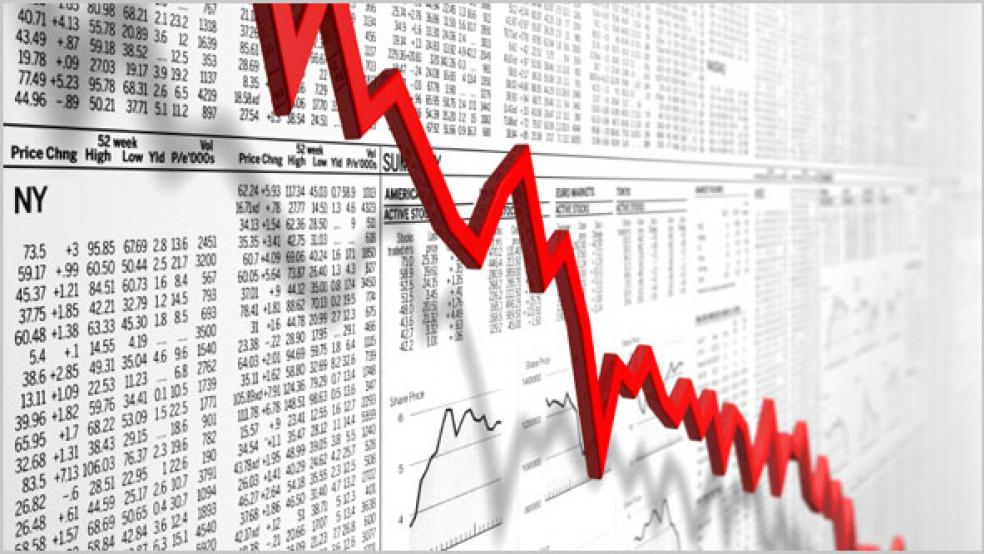Wall Street resumed its selling frenzy Thursday morning as investors digested a host of weak economic numbers, new concerns about European banks, and a gloomy forecast for global growth from Morgan Stanley.
The Standard & Poor’s 500-stock index tumbled by as many as 59.17 points, or nearly 5 percent, in early morning trading, with 99 percent of the issues falling. The Dow Jones Industrial Average was down as much as 528 points, or 4.6 percent, with all 30 stocks in the index trading lower. The Nasdaq Composite index fell as many as 135.07 points, or more than 5 percent.
As the same time, benchmark 10-year Treasuries saw yields hit a record low below 2 percent for the first time ever.
Among the factors weighing on the market:
• The National Association of Realtors said existing home sales dropped by 3.5% in July to an annual rate of 4.67 million. Economists had expected a much higher rate of 4.87 million.
• The Labor Department reported that weekly jobless claims rose to a worse-than-expected 408,000, with last week’s total revised upward by 4,000 to 399,000. “Encouragingly, the pace of firings are moderating to near the lowest since summer of '08,” equity strategist Peter Boockvar of Miller Tabak wrote in a note to clients, “but the level of hirings of course remain still at a sluggish pace and well below what is needed to put a real dent in the unemployment rate.”
• The Bureau of Labor Statistics reported that inflation ticked up by more than expected in July. The Consumer Price Index for All Urban Consumers (CPI-U) rose 0.5 percent in July, with gas prices up 4.7 percent. Economists had expected a rise of 0.2 percent in July. The higher number sparked renewed concern that creeping inflation could forestall more aggressive action by the Federal Reserve.
• The Philadelphia Federal Reserve Bank’s index of regional business activity plummeted to a reading of -30.7, well below expectations. “The easy conclusion is that the U.S. economy has clearly been impacted for the worse,” says Boockvar, and investors will be watching closely when data on manufacturing activity nationwide is released on September 1.
• Morgan Stanley and Goldman Sachs cut their forecasts for global GDP growth in 2011 and 2012. Morgan Stanley trimmed its forecast for global GDP growth from 4.2 percent to 3.9 percent in 2011, and from 4.5 percent to 3.8 percent in 2012. The bank cited the “policy errors” and austerity measures being enacted in a number of countries as well as higher commodity prices and other economic pressures. The U.S. and Europe are "hovering dangerously close to recession,” Morgan Stanley’s analysts wrote.





